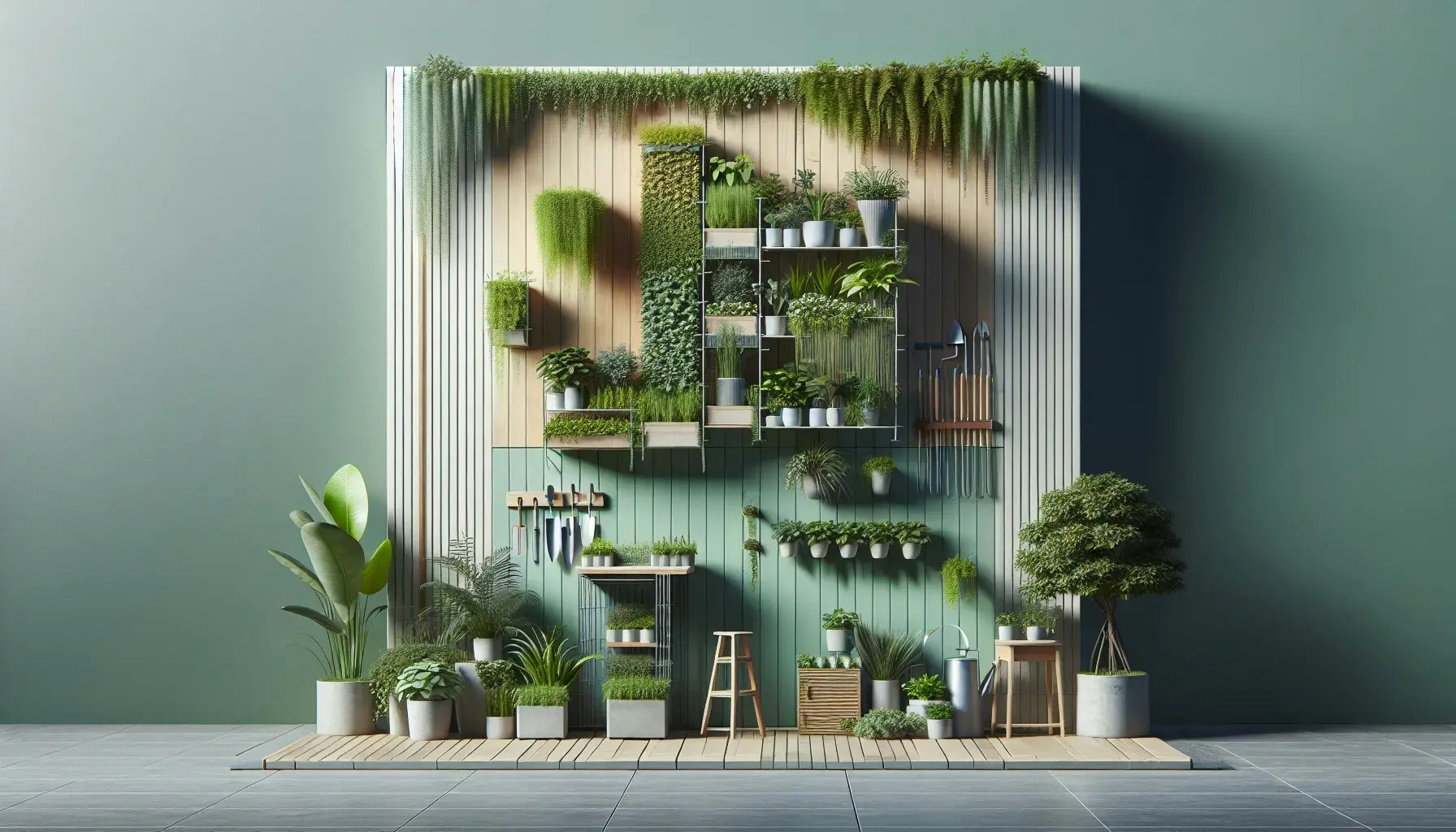Vertical gardening, an innovative approach to traditional gardening, is gaining popularity worldwide. This technique, which involves growing plants on a vertically suspended panel, offers a multitude of benefits. From saving space to improving air quality, vertical gardening is a game-changer for both urban and rural dwellers. This blog post will delve into the numerous advantages of adopting this gardening method.
Space Efficiency: A Key Benefit of Vertical Gardening
Vertical gardening is a boon for those with limited space. It allows you to grow a variety of plants in a confined area. This is particularly beneficial for urban dwellers who lack the luxury of a spacious backyard. With vertical gardening, you can transform your small balcony, patio, or even an indoor wall into a lush green space.
Vertical gardens are not only space-efficient but also highly versatile. You can grow a wide range of plants, from herbs and vegetables to ornamental flowers and succulents. Moreover, vertical gardens can serve as a living wall, providing privacy and adding aesthetic appeal to your home.
In addition to saving space, vertical gardens can help reduce clutter in your garden. Traditional horizontal gardens often require numerous pots and containers, which can make your garden appear messy and unorganized. In contrast, vertical gardens offer a neat and streamlined look, enhancing the overall aesthetics of your space.
Vertical Gardening: A Solution for Better Air Quality
Vertical gardens can significantly improve air quality. Plants naturally filter the air by absorbing pollutants and releasing oxygen. By growing more plants in a vertical garden, you can enhance this natural air purification process.
Vertical gardens can also help reduce noise pollution. The plants in a vertical garden can absorb and deflect sound waves, creating a quieter and more peaceful environment. This can be particularly beneficial in urban areas, where noise pollution is a common issue.
Moreover, vertical gardens can contribute to reducing the urban heat island effect. This phenomenon occurs when concrete buildings and asphalt roads absorb and radiate heat, causing cities to be significantly warmer than surrounding rural areas. Vertical gardens can help mitigate this effect by providing shade and releasing moisture into the air, thereby cooling the surrounding environment.
Vertical Gardens: Enhancing Biodiversity and Promoting Health
Vertical gardens can play a crucial role in enhancing biodiversity. By providing a habitat for various plant species, they can attract a wide range of insects and birds, thereby promoting biodiversity in urban areas.
In addition to enhancing biodiversity, vertical gardens can also promote health and well-being. Gardening is a therapeutic activity that can reduce stress and improve mental health. The physical activity involved in maintaining a vertical garden can also contribute to physical health by providing a form of low-impact exercise.
Moreover, if you choose to grow fruits and vegetables in your vertical garden, you can have access to fresh, organic produce. This can not only save you money but also ensure that you are eating healthy, pesticide-free food.
Water Efficiency and Ease of Maintenance in Vertical Gardening
Vertical gardens are water-efficient. Unlike traditional gardens, where water can easily evaporate or run off, vertical gardens allow water to trickle down from the top to the bottom, ensuring that all plants receive adequate water. This can save a significant amount of water, making vertical gardening a more sustainable option.
In terms of maintenance, vertical gardens are relatively easy to manage. Due to their vertical nature, they are less prone to pest infestations and diseases, which are more common in traditional gardens. Moreover, tasks such as weeding, pruning, and harvesting are easier to perform in a vertical garden due to the plants' accessibility.
Vertical Gardening: A Tool for Urban Revitalization
Vertical gardens can contribute to urban revitalization. They can transform dull, concrete walls into vibrant, living structures, adding color and life to urban landscapes. This can not only enhance the aesthetic appeal of cities but also improve the quality of life for urban residents.
Furthermore, vertical gardens can be used to promote community engagement. Community vertical gardens can provide a space for residents to interact and work together, fostering a sense of community and belonging. They can also serve as an educational tool, teaching children and adults alike about the importance of sustainability and biodiversity.
The Economic Benefits of Vertical Gardening
Vertical gardening can offer economic benefits as well. By growing your own fruits and vegetables, you can save money on grocery bills. Moreover, if you have a large vertical garden, you can even sell your produce, providing an additional source of income.
Vertical gardens can also increase property values. A well-maintained vertical garden can enhance the aesthetic appeal of a property, making it more attractive to potential buyers or renters. Therefore, investing in a vertical garden can yield significant economic returns in the long run.
The Future is Vertical: Embracing the Benefits of Vertical Gardening
Vertical gardening offers a multitude of benefits, from space efficiency and improved air quality to enhanced biodiversity and economic gains. By adopting this innovative gardening method, we can create healthier, more sustainable, and more vibrant living spaces. As we move towards a future where space is a premium and sustainability is a necessity, vertical gardening emerges as a viable and beneficial solution.

